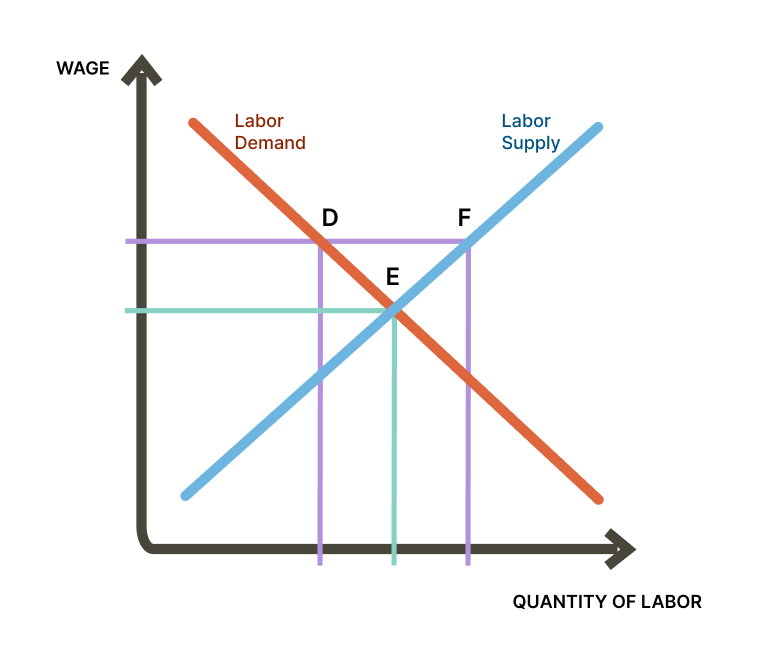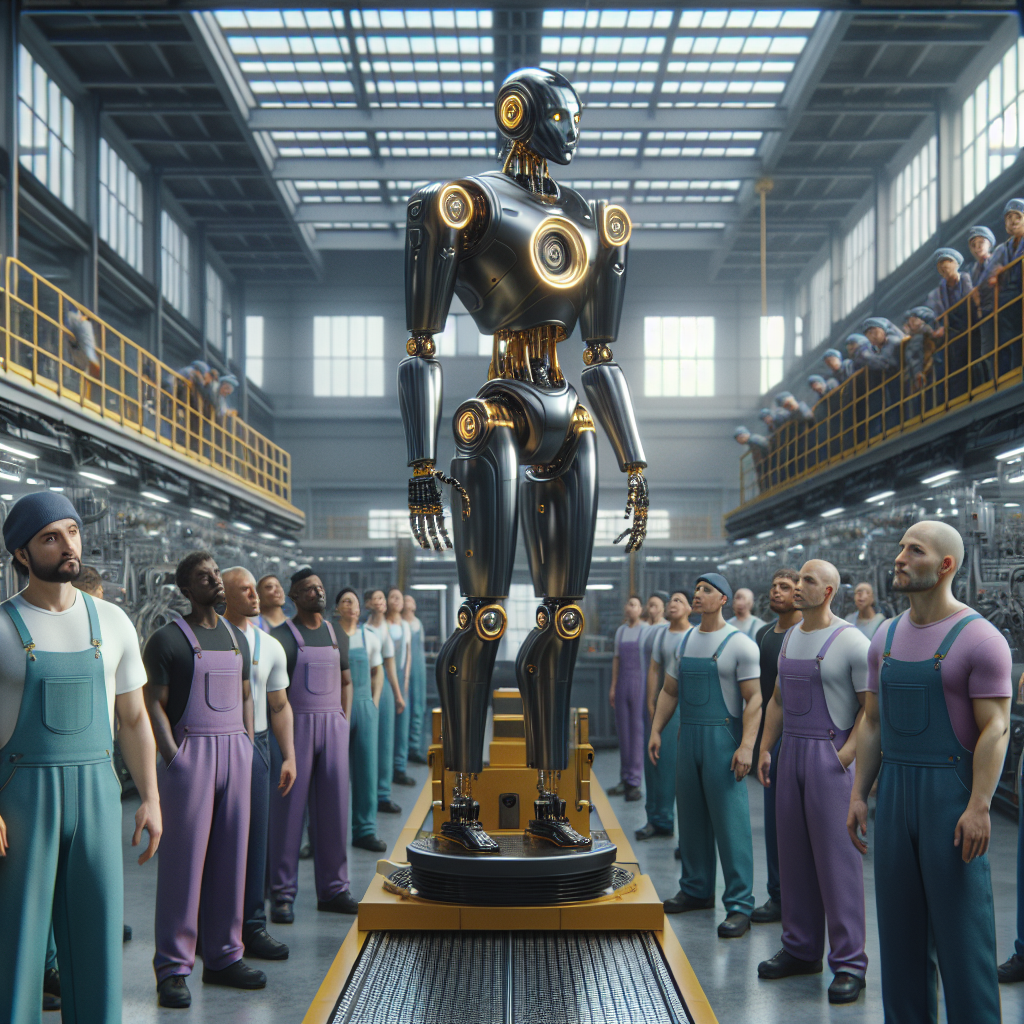What is structural unemployment?
Ever felt like a DVD salesman in a streaming world? That’s structural unemployment for you! It’s when there’s a serious labor market mismatch—the jobs are out there, but your skills are about as useful as a flip phone in the smartphone era. Basically, structural unemployment happens when the skills people have just don’t line up with what employers need, often because the economy’s shifted faster than you can say “blockchain.”

When industries evolve or technology advances, some folks find their expertise is now obsolete. Imagine being a typewriter repair expert when everyone else has moved on to laptops. That’s the kind of mismatch we’re talking about. This isn’t just bad luck—it’s a fundamental shift that leaves certain workers behind.
Structural unemployment definition in economics
In economic terms, structural unemployment arises from a disconnect between the skills workers possess and the skills demanded by employers. Think of it like trying to fit a square peg into a round hole—it just doesn’t work. Employers need specific abilities, and if job seekers don’t have them, they’re out of luck. This isn’t about people being lazy; it’s about their skills not matching up with the current job market.
Technological changes, globalization, and shifts in consumer preferences can all contribute to this mismatch. For example, as automation increases, jobs that once required manual labor may now need tech-savvy operators. If workers don’t adapt, they risk being left behind.
Structural unemployment causes

- Technological changes/advancements
- Competition
- Geographical immobility
- Macroeconomic changes
- Wage-related causes
- Lack of internal training or education programs
- Company relocations
- Occupational immobilities
Let’s break these down:
Technological changes/advancements
Technology is a double-edged sword. While it makes life easier, it can also make certain jobs obsolete faster than you can update your software. Think about cashiers getting replaced by self-checkout machines or assembly line workers being swapped out for robots. If workers can’t transition to new roles, they become structurally unemployed.
Competition
Globalization means companies often move operations to countries where labor is cheaper. If a factory relocates overseas, the local workers aren’t hopping on that flight. They’re left unemployed, not because they’re unskilled, but because they can’t compete with lower wages elsewhere.
Geographical immobility
Jobs might be available—but not where you live. Moving isn’t always an option due to family ties, housing costs, or other personal reasons. So, even if there’s a demand for your skills elsewhere, you’re stuck where you are, and structural unemployment takes root.
Macroeconomic changes
Big shifts in the economy can change which industries thrive and which ones dive. If the market takes a turn against your industry, you might find yourself without a chair when the music stops. Older workers often bear the brunt since retraining can be more challenging.
Wage-related causes
Sometimes, jobs are available, but the pay is so low that workers can’t—or won’t—accept them. If minimum wage laws push wages above what employers are willing to pay for certain jobs, those positions might disappear altogether.
Structural unemployment examples
Consider the rise of ride-sharing apps like Uber and Lyft. Traditional taxi drivers have seen a decline in demand for their services. Their specialized knowledge of city streets has been replaced by GPS technology accessible to anyone with a smartphone. Unless they adapt, these drivers may face structural unemployment.
Another example is the decline of coal mining jobs due to shifts toward renewable energy sources. Coal miners possess skills specific to their industry, and without retraining, they may struggle to find employment in emerging sectors.
Solutions to Structural Unemployment

- Education and training
- Breaking geographical barriers
- Housing subsidies
- Reduction of unemployment benefits
- Employer subsidies
- Labor market flexibility
Education and training
Investing in education and vocational training can equip workers with in-demand skills. Think of it as upgrading your operating system. Governments and businesses can offer programs that make re-skilling more accessible, helping workers transition into new industries.
Breaking geographical barriers
Remote work is more feasible than ever. Companies can tap into talent pools regardless of location, and workers aren’t limited to jobs within commuting distance. Bridging this gap reduces structural unemployment caused by geographical immobility.
How to calculate the structural unemployment rate
The structural unemployment rate is calculated by dividing the number of structurally unemployed individuals by the total labor force, then multiplying by 100 to get a percentage:
Structural Unemployment Rate = (Structurally Unemployed Workers / Total Labor Force) × 100
Graph
The relationship between wage levels and labor demand can be depicted with supply and demand curves.

What’s on the graph?
- Axes:
- The vertical line (up and down) is the Wage — how much workers are paid.
- The horizontal line (left to right) is the Quantity of Labor — the number of workers.
- Lines:
- Labor Demand (orange line): Shows how many workers businesses want to hire at different wages.
- Labor Supply (blue line): Shows how many workers are willing to work at different wages.
- Points:
- E (Equilibrium): This is the “perfect match” where the number of workers businesses want to hire equals the number of workers available.
- D and F: These show where there are mismatches.
What’s happening in the graph?
- Equilibrium Wage (Point E): If wages are at this level, everyone who wants to work at that pay can find a job, and every business can find workers. There’s no unemployment at this point.
- Higher Wage (Point D): If wages are above equilibrium (e.g., because of government policies or unions), businesses hire fewer workers. This creates unemployment, as more people want to work, but there aren’t enough jobs.
- Quantity Gap (Between Points D and F): This gap shows structural unemployment, which happens when there’s a mismatch in the labor market.
How does this relate to structural unemployment?
- Structural unemployment occurs when workers’ skills don’t match the jobs available. For example:
- Jobs may require advanced tech skills, but workers may only know how to do simpler tasks.
- Some industries may shrink (e.g., coal mining) while others grow (e.g., tech jobs). Workers in shrinking industries may be left without jobs.
In the graph:
- Even though people are willing to work (Point F), businesses don’t want to hire them at that wage.
This mismatch creates structural unemployment, where jobs exist, but workers can’t fill them because they don’t have the right skills or are in the wrong location.
Frictional vs. Structural Unemployment
Frictional unemployment is temporary unemployment during transitions between jobs. It’s like being between seasons of your favorite show—waiting, but knowing more is coming.
Structural unemployment, however, is more like your show being canceled because the network shifted focus. The key difference lies in the cause: frictional is about timing, while structural is about mismatched skills.
Takeaways
Example of structural unemployment
When automated kiosks replace fast-food cashiers, those workers may become structurally unemployed if they lack other employable skills.
Is structural unemployment good or bad?
Generally, it’s bad news. It leads to wasted resources and can cause economic and social problems. However, it can also signal technological progress, which has long-term benefits.
Is structural unemployment included in the unemployment rate?
Yes, it’s a component of the overall unemployment rate reported by labor statistics agencies.
What is the difference between seasonal unemployment and structural unemployment?
Seasonal unemployment occurs when jobs disappear at certain times of the year (like holiday retail positions). Structural unemployment is due to fundamental shifts in the economy that change the demand for certain skills.
What causes structural unemployment?
Causes include technological advancements, globalization, changes in consumer preferences, and policy decisions that affect industries.
